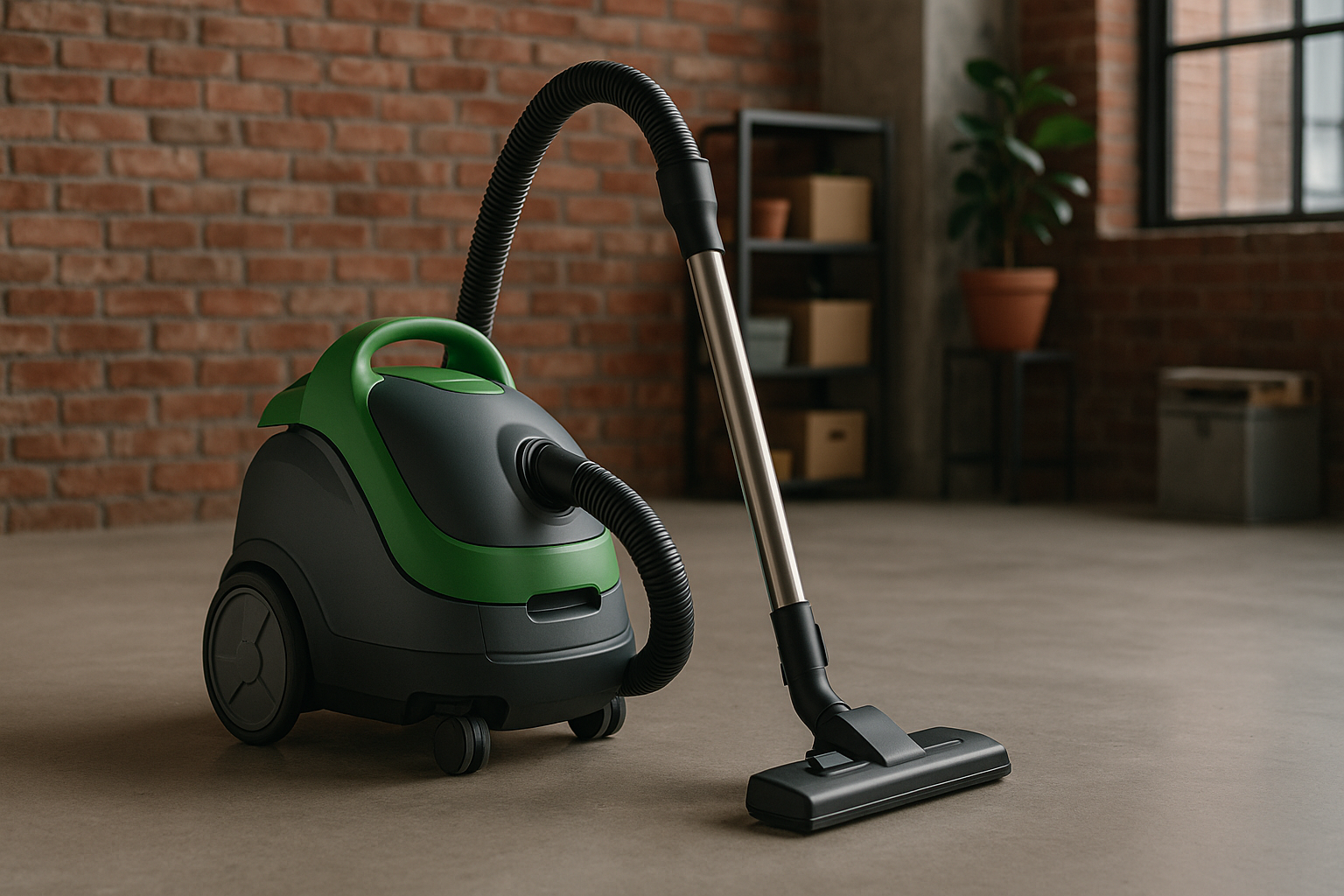
1. The Global Push Toward Sustainability 🌱
The vacuum cleaner industry, once focused solely on performance, is now at the forefront of sustainability and innovation.
In 2025, global manufacturers face increasing pressure to reduce carbon emissions, use recyclable materials, and adopt energy-efficient production.
Environmental awareness and consumer expectations are converging — buyers now seek cleaning products that are both powerful and planet-friendly.
💡 Market Insight: 78% of consumers globally prefer eco-labeled or energy-efficient home appliances when making purchasing decisions.
2. Green Materials and Circular Design 🔄
Traditional vacuum cleaners often relied on hard plastics and non-recyclable components.
The new generation of Eco-friendly Vacuum Cleaners embraces bioplastics, recycled aluminum, and modular assembly that extends product lifespan.
Manufacturers are adopting circular economy principles, ensuring every part — from filters to casings — can be reused or responsibly disposed of.
This approach not only minimizes waste but also reduces the total carbon footprint of each unit produced.
♻️ Example: A single shift to recycled polymer components can lower manufacturing emissions by up to 35%.
3. Energy Efficiency: The New Performance Standard ⚡
In 2025, energy efficiency equals innovation.
The latest Energy-Saving Efficient Powerful Vacuum Cleaners combine high-torque brushless motors with AI-driven power management systems, reducing energy use without compromising suction.
These vacuums can sense floor type, dust level, and usage patterns — dynamically adjusting suction power for maximum efficiency.
Such innovations redefine what “high performance” means, proving that sustainable can also be superior.
🧠 Tech Note: AI-assisted energy control can reduce power consumption by 20% across an average cleaning cycle.
4. Smart Manufacturing: Where Technology Meets Ecology 🏭
Sustainability isn’t just about the end product — it begins at the factory.
Smart manufacturing systems use IoT sensors and data analytics to monitor energy usage, optimize assembly lines, and minimize production waste.
Factories producing Cordless Vacuum Cleaners and HEPA Filter Vacuum Cleaners now use renewable energy sources and automated quality control to reduce defects.
This results in lower waste, faster delivery times, and consistent quality — essential for global OEM/ODM buyers.
🏭 Industry Fact: Smart factories using renewable energy can cut operational carbon emissions by up to 50%.
5. Automation and Robotics in Sustainable Cleaning 🤖
Robotic innovation has become a major catalyst for sustainability.
Autonomous systems like Self-Cleaning Vacuum Cleaners and AI-powered Wet Dry Vacuum Cleaners reduce water and chemical waste through precision control.
Smart route mapping and adaptive suction help minimize electricity consumption while maximizing cleaning coverage — a win for both efficiency and the environment.
Commercial cleaning operations are also leveraging these robotic systems to reduce human workload and improve safety.
6. Global Market Trends and Consumer Shifts 🌍
The global vacuum cleaner market is becoming more diverse and sustainability-driven.
Asia-Pacific leads in production and exports, while Europe drives environmental standards and product certification.
North America continues to dominate in innovation, integrating AI and IoT capabilities into nearly every product segment.
Consumers worldwide now expect vacuums to deliver:
High suction with low energy use
Long-lasting, recyclable components
HEPA filtration for improved air quality
Compact, noise-reduced, smart-enabled designs
📊 Trend Forecast: The sustainable vacuum cleaner market is expected to reach USD 15 billion by 2028, growing at a CAGR of 10.2%.
7. The Role of Brands in a Responsible Future 💼
Manufacturers have a duty to lead by example.
Companies focusing on eco-certifications, modular repair systems, and global recycling programs are building stronger brand loyalty.
Forward-looking brands like Lanxstar are developing integrated sustainability models — combining energy-efficient motors, recyclable materials, and smart connectivity.
Their innovations demonstrate how performance, profitability, and environmental care can coexist in modern manufacturing.
🌐 Conclusion: A Greener, Smarter Tomorrow
The future of the global vacuum cleaner industry lies in sustainable innovation.
From factory to floor, every design decision matters — energy efficiency, material selection, and automation are the new pillars of progress.
For global buyers and manufacturers, investing in sustainability is not just an environmental choice — it’s a strategic advantage.
✨ The next era of vacuum technology is here: smarter, cleaner, and greener.
Discover how sustainability and technology meet at www.lxvacuum.com.
📋 50 Related Keywords
sustainable vacuum cleaner, Eco-friendly Vacuum Cleaner, Energy-Saving Efficient Powerful Vacuum Cleaner, HEPA Filter Vacuum Cleaner, Cordless Vacuum Cleaner, Multi-Functional Durable Vacuum Cleaner, Self-Cleaning Vacuum Cleaner, 4 in 1 Cordless Smart Wet & Dry Vacuum Cleaner, Portable Quiet Vacuum Cleaner, Fast Lightweight Vacuum Cleaner, Large-Capacity Wet Dry Vacuum Cleaner, Li-ion Cordless Handheld Vacuum Cleaner, Wet Dry Vacuum Cleaners, Quiet Vacuum Cleaner, Apartment Vacuum Cleaner, Wet and Dry Vacuum Cleaner, Quiet Vacuum for Night Use, Vacuum Cleaner for Pet Hair, Green Cleaning Technology, Smart Manufacturing, Circular Economy Appliance, Renewable Energy Factory, Sustainable Product Design, Eco Certification Vacuum, Recyclable Vacuum Materials, AI Smart Cleaning, Connected Cleaning System, Eco Innovation, Eco Home Appliance, Sustainable Cleaning Device, Green Industrial Vacuum, Lanxstar, vacuums procurement, vacuum cleaner distribution, energy-efficient production, smart home cleaning, eco-friendly product design, robotic cleaning technology, global vacuum market, sustainable OEM manufacturer, eco labeling standard, clean energy production, environmental appliance innovation, carbon neutral factory, zero waste vacuum, advanced suction system, intelligent eco cleaner, renewable material vacuum, smart green innovation, sustainable future cleaning
















